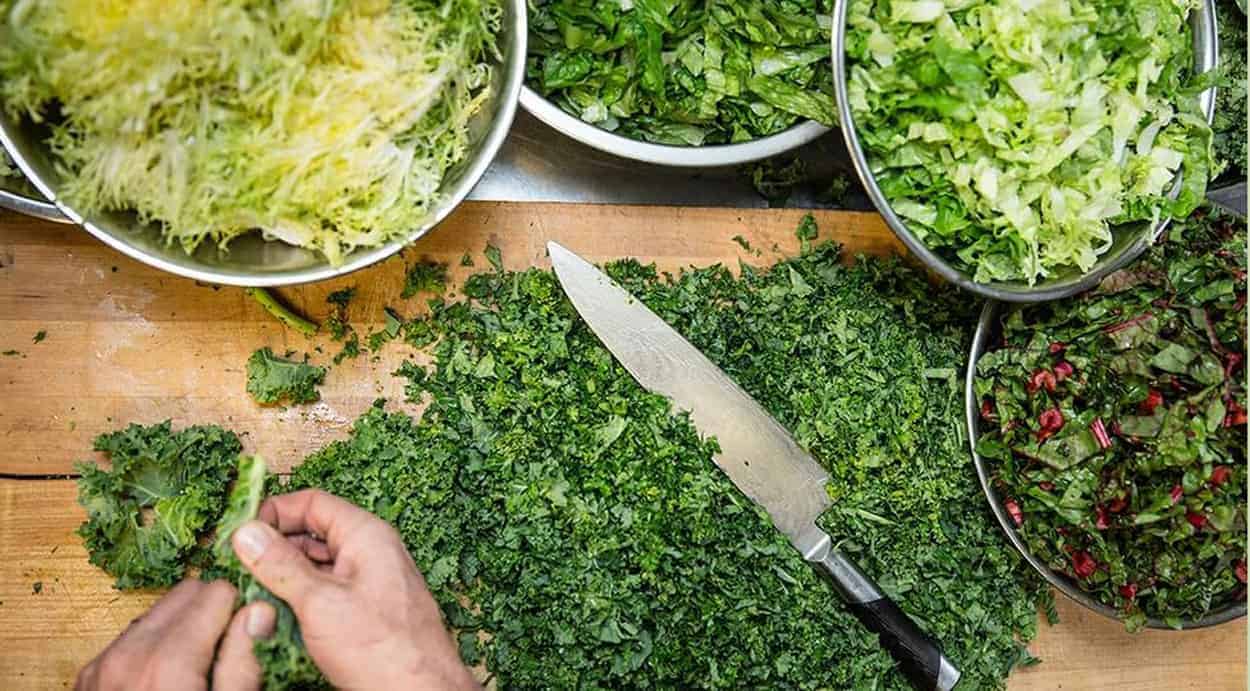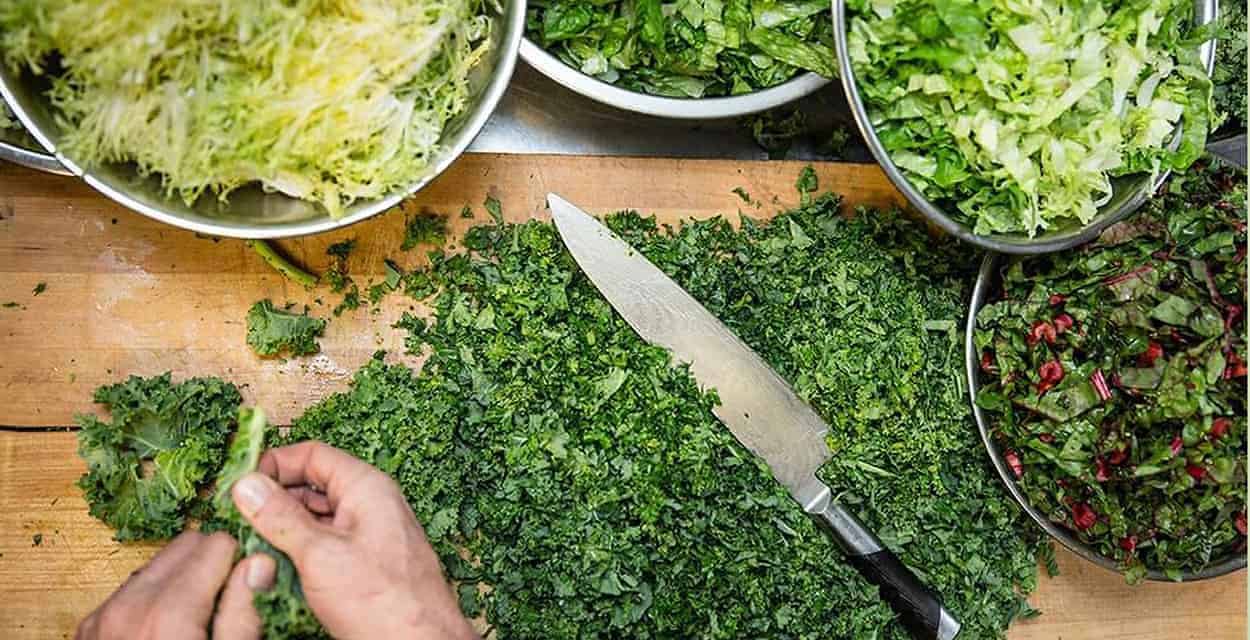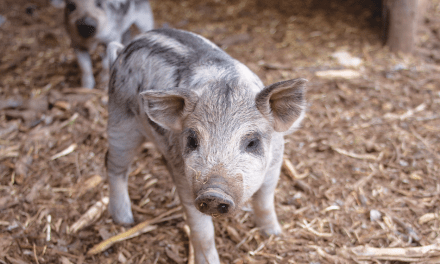A Dance of Texture and Flavor
By Robert Salas

We are officially two months into the new year. How’s your resolution to eat healthier going? Tired of eating the same old store-bought salad from a bag? Fret not, when it comes to crafting a nutrient-dense salad that tastes amazing, we have you covered. We partnered with Owner, Founder, and Executive Chef of Vinaigrette, Erin Wade, to help you start and maintain a tried and tested method for crafting gourmet salads at home.
But first, a little background on our salad expert. Wade’s culinary journey started from the ground up, literally. In the mid to late 2000s, Wade began learning the fundamentals of sustainable farming on ten acres of land in northern New Mexico, which is now thriving and supplies seasonal ingredients to her restaurants. Wade’s passion for locally grown produce and zeal for healthy eating led her to open the first Vinaigrette in Santa Fe in 2008. Now, she owns multiple restaurants in Santa Fe, Albuquerque, and Austin.
The first step to crafting the perfect salad at home is to always keep balance in mind. It’s easy to slop together a hodgepodge of ingredients and call it a salad, but you really want to think about what texture and flavor combinations you are aiming to create. Next you want to choose your base greens. This is where you can experiment with new and different types of greens. Mixed greens and lettuces are light and crispy, perfect for a garden salad. Try it with dried cherries, fresh pears, and toasted almonds! One caveat to mixed greens and lettuces is that they’re going to have a higher water content and so, Wade suggests, be very precious when chopping these greens. (Pro tip: make sure to use a sharp knife to avoid crushing your greens).
“With something like mixed greens and lettuces, you want to be very delicate when chopping and handling,” Wade said. “If you are too rough with it, you’ll break the cell wall and let out all of that cytoplasm and lose that turgidity that keeps the greens nice and crisp. Plus, you will lose a good amount of nutrients that way as well.”

For a sturdier green, we recommend using kale which is one of the most nutrient-dense greens out there. Kale is abundant in vitamins A, C, and K, antioxidants, calcium, and fiber. Wade recommends a strong-handed approach when preparing kale. Wade explains, “kale has very lignified cells walls, which makes it hearty, too hearty. So, you’re going to want to manhandle it and chop it very finely. Don’t worry, it can take it.”
Again, keeping balance in mind, incorporating protein into your salad will add more texture and help you feel fuller longer. For the carnivorous folks out there, chicken is a great go-to for a protein source in salads. (Pro tip: buy a rotisserie chicken and use it throughout the week to save time). Salmon and skirt steak are great options, as well.
Not a meat eater? There are endless options of protein sources for you. Wade says nuts are a great way to add a punch flavor and textural crunch. You can use any nuts that you love; walnuts, pecans, pine nuts and almonds are just a few options. “We always toast our nuts to really bring out that nutty, toast deliciousness,” Wade says. You can also add different beans to your salads like kidney beans or cannellini. Just remember to keep a balanced ratio of greens to proteins. For a creamy and decadent touch, add your favorite cheeses like parmigiano Reggiano, grated sharp cheddar, feta, or bleu.
Let’s talk about the one salad component that brings everything together: the vinaigrette. A good rule of thumb is to remember the 3:1 oil-to-vinegar ratio. Olive oil and apple cider vinegar make a great base for a starter vinaigrette. Adding some citrus like lemon or orange gives the vinaigrette a lifted tanginess with deep complexity. Wade says emulsification is a key component of a great vinaigrette. At home you can use a mason jar and some good old-fashioned muscle to shake up your vinaigrette, or you can use a whisk. Constant agitation is the goal here. Vinaigrettes naturally separate so we recommend emulsifying immediately before serving. Heavy-handed seasoning is required to create a potent punch of flavor. Feel free to experiment with spices like cumin, cayenne, dried garlic, white pepper, and dried ginger.
“You want to make sure your vinaigrette is really flavorful. When you taste it by itself it should be more of a concentrated, intense punch of flavor.” She says, “You have to keep in mind it’s going to be tossed with a larger volume of ingredients that have more muted flavor profiles.”
Making a lifestyle change is hard and we get it. Here are some final tips on how to make your transition just a little bit easier. For those of you with kids, get them involved. There’s nothing better than bonding with your little ones in the kitchen through an educational and tasty culinary experience. With kids’ salads, we recommend incorporating fresh fruits and cheeses like apples and cheddar. Adding honey to your standard vinaigrette can help kids get more acclimated to the more bitter flavor profiles of traditional vinaigrettes.
Meal prepping is a huge part of maintaining a healthier lifestyle. No one wants to spend their days chopping produce before each meal. Wade recommends prepping everything ahead of time. Chop your greens and additional veggies and store them in your fridge (throw half a lemon in the container to help prevent browning). Finally, to avoid a soaked or wilted salad for lunch, store your vinaigrette in a separate container and toss immediately before eating to ensure your salad is fresh, crisp, and satisfying.
Edible celebrates New Mexico's food culture, season by season. We believe that knowing where our food comes from is a powerful thing. With our high-quality, aesthetically pleasing and informative publication, we inspire readers to support and celebrate the growers, producers, chefs, beverage and food artisans, and other food professionals in our community.

















